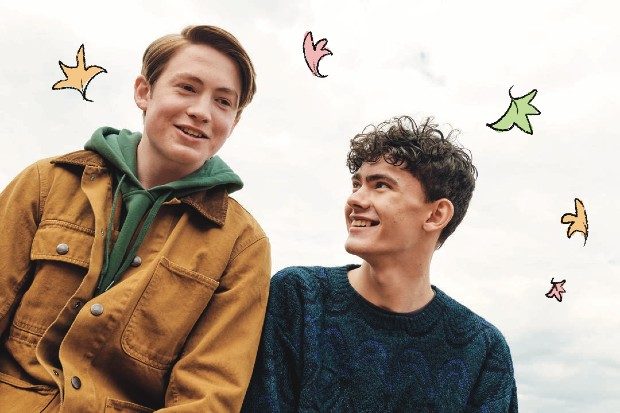Photo courtesy of Netflix Studios.
Representation Matters: A Review of ‘Heartstopper’
Last month, Netflix released the first season of Heartstopper, an original TV show based on the graphic novel series by Alice Oseman. The story follows Charlie Spring, a gay teenager navigating high school, friendships, and mental health.
Charlie meets Nick Nelson, an athlete with a golden retriever personality, and the two become close friends early on. Charlie develops a crush on Nick, who everyone, including Nick himself, believes is straight. Nick’s own story follows his questioning experience and the slow realization that his feelings toward Charlie may be more than friendship. His story is a common one in real life but is one that is uncommonly represented in the media.
Rather than reject his feelings for Charlie, Nick is curious about them, does research, and talks to the people that he trusts. Even when he fully realizes he has feelings for Charlie, he is still figuring out his sexuality. Heartstopper lets the viewer know that it is okay to be unsure of how they identify for as long as they need and that their journey should be on their terms.
Charlie and Nick are not the only two key characters featured in Heartstopper. Elle Argent is one of Charlie’s best friends. One of the sweetest characters, Elle, is a Black trans girl trying to find her place at the all-girls school, Higgs. At first, she feels like an outcast, but eventually meets Darcy Olsson and Tara Jones.
Tara and Darcy are outgoing and funny, and they instantly connect with Elle. Tara and Darcy deal with their own struggles in school after making their relationship public. Nick, Charlie, Elle, Tara, Darcy, and two other characters, Tao and Isaac, gradually all become a friend group.
Oftentimes when LGBTQ+ identifying people are represented in the media, it is from a perspective involving a lot of trauma. Many stories about queer people are either about the process of coming out or the harassment they deal with once they do. While these are important stories to tell, queer people also deserve a heartwarming coming-of-age story about a friend group that might look a lot like their own.
Though Heartstopper tackles subjects like eating disorders and bullying, these subjects are not the entire story but merely part of the characters’ journeys. In doing so, Heartstopper shows not just one part of a character’s story or identity but the whole of who they are. Along with some of the struggles of being gay come the joyful moments, the prideful ones, and the celebrations of queer love and identity.
Heartstopper shows how oftentimes teens feel outcasted, especially when their environment is not as accepting as it could be. At the center of the series’ storyline is a friend group built on support so that every member of the group can find belonging and acceptance. Platonic relationships are just as important as romantic ones, and Oseman makes sure that both the comics and the TV show portray this. Whether through Charlie’s friendship with his best friend Tao, his relationship with his sister Tori, or Nick’s relationship with his mom, Heartstopper shows that there are many different kinds of love.
Heartstopper is proof that representation matters. Since it became a Netflix series and became more widely known, the response has been massive. People from all different backgrounds see themselves represented by the characters. Some identity as a member of the LGBTQ+ community or as a person of color. Some just relate to the quirks of the characters and how each of them has a unique and comforting personality. Having a series with so much significant representation on one of the world’s largest streaming services is incredibly important.
The show is different from the comics in some ways, but it was brilliantly cast and written and does not stray far from the comics themselves. With bright colors, panel-like framing, and small animated leaves or snow, the show pulls visual elements from the comics to give it that graphic novel feel. One of the best ways it does this is when a character sometimes has feelings for someone, small animated fireworks light up their face. Though some fans were disappointed the show did not have Charlie’s funny younger brother, Oliver, and did not develop Tao’s character as well as the comics did, there were still many similarities to the comics. For instance, Nick’s lovable dog, Nellie, was excellently cast and had a prominent role in the show.
While the show has not yet shown as much of the personal lives of the characters as the comics did, with another season, viewers will hopefully get to learn more about the characters. Whether reading the comics or watching the show, fans are engrossed in the story and comforted by the representation that Heartstopper brings. They are excited to see what’s next in the series, both in book five of the comics and season two of the show.

